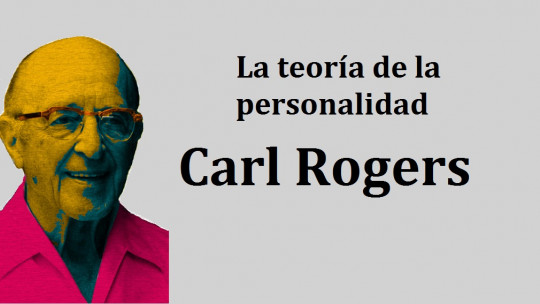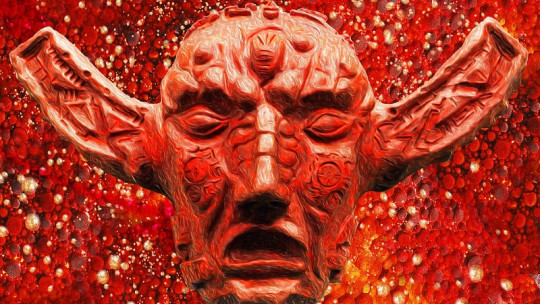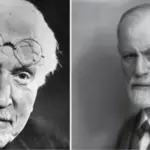What is the enneagram and what is it for? This tool proposes 9 enneatypes or personality types to classify people.

He enneagram It is a system to analyze different personality types and is becoming established as a way for self-knowledge and personal development. The interest in classifying people into different personalities has driven great efforts in the field of psychology, which has approached this aspect from different perspectives throughout its history. Among them we find the MBTI personality test, which is based on Carl Gustav Jung’s conceptual theory and cognitive functions. More recently, another method to discover personality is the enneagram, which is currently experiencing a boom and is reflected in its presence in the media and the proliferation of enneagram tests on websites and blogs.
Although it is considered that the latter, unlike the first, is not based on scientific bases but rather on magical thinking, we could say that for some people it is a basis for those interested in knowing themselves better. He enneagram encourages growth using the right resources. Knowing yourself is, many times, the beginning to face changes and difficulties and to obtain new ways of behavior based on personal experience that lead to greater satisfaction.
What is the enneagram?
He enneagram is a guide that includes 9 personality types, called enneatypes, as well as their relationships with each other. That is, the enneagram of personality generically describes 9 archetypal mental models that refer to behavioral tendencies and that, depending on the state in which they are, can approximate each other.
Through these personality types or a specific enneatype, the enneagram sheds light on the limitations and potentialities we have. In this way, the enneagrams are based on analyzing the degree of proactivity or frustration to see if the predominant personality integrates or disintegrates into another of the 9 personality types.
Given the the enneagram of personality It has multiple facets (and its name in Greek means nine lines and in geometry it is a nine-pointed star), it is represented by a circle with nine lines connected to each other that symbolize the relationship scheme between the 9 types of the enneagram.
Each type of personality linked to the enneagram embodies certain characters and patterns of behavior, thought and feeling that, when verified, provoke in the individual a greater and better understanding of oneself, the main objective of this system. From the analysis of these internal traits and by detecting where attention is directed daily, the person can choose whether to continue with the same patterns or try to change them in the event that they no longer serve them or they have to adopt others for new situations. Learning about yourself allows you to stop acting automatically, be aware of your way of being and be able to freely choose what attitudes to take.
* If you are a psychologist and want to train to better understand the personality of your patients we recommend that you take into account the official master’s degrees in psychology.
Enneagram Applications
The enneagram applications They are multiple. This tool is used by psychotherapy professionals or in recovery processes. coaching personnel to help people’s self-knowledge. It also has applications in job coaching, since it is often used by companies to promote workers’ emotional intelligence, leadership or proactivity. Even in professions that require great knowledge of human beings to create rich and deep characters, such as writers or screenwriters, knowing the personalities of the enneagram can be useful. In this way, knowing your enneatype can give you the following benefits:
- Motivation: Know the enatype to which you belong can give you certain knowledge about your personality that perhaps you had not stopped to analyze. So much so that knowing our defects and virtues can help us motivate ourselves to change for the better.
- Increase awareness and confidence: Detect the enneagram to which we belong can be very useful to improve both our confidence and self-awareness. In this way, it can give us a good push to be more aware of each of our automatic thoughts.
- Enhance your virtues: The moment you know what your enneatype Within the enneagram this can help you better identify your abilities. So much so that you can improve your self-esteem thanks to this knowledge.

The 9 enneatypes in the enneagram
Classified in numbers from 1 to 9, the enneatypes on the enneagram They represent the different personalities and each of them is presented as a vertex of the enneagram. People are included in an enneatype, which is the one that offers the properties in which they stand out the most. Each of the 9 enneatypes describes both the character and the attitudes, qualities, fears and defects, they are intended to be like a mirror in which to see oneself reflected in a sincere way.
Enneatype 1
He enneatype 1 in it enneagram It includes people who are demanding of themselves, perfectionists and who want to achieve an ideal. For this reason, they strive to improve but, never reaching their expectations, they feel great frustration. Enatype 1 or Enneagram 1 is called ‘The Reformer’ and its main attributes are the following:
- They value their principles
- Critical and intransigent
- Perfect and determined
- They fight for integrity
Enneatype 2
In enneagram the enneatype 2 indicates people called “helpers”, that is, their satisfaction lies in giving a lot for others, being altruistic and generous with those around them, but they do not take care of themselves or their needs. Enneatype 2 or Enneagram 2, called ‘The Helper’, has these characteristics:
- He is very generous
- Wants to make others happy
- He puts a lot of energy into his relationships
- They know how to listen
Enneatype 3
Inside of the enneatype 3 We find people who seek personal success and who are winners by nature. They have a certain tendency to narcissism They are ambitious people with concern for aesthetics and outward charm. After the apparent security, they are often insecure and need the positive evaluation of others to feel good. The so-called ‘achiever’ or enneagram 3 has the following abilities:
- People who seek success
- They suffer from a work addiction
- They want to stand out
- They take care of their image
Enneatype 4
The enneagram reveals that the enneatype 4 It includes people of great sensitivity and introspection, generally individualistic but who need the attention of those around them to share their emotions and feelings. Enneatype 4 or Enneagram 4 is called ‘The Individualist’ and is characterized by:
- They have a lot of creativity
- Tendency toward egocentrism
- Strong sense of identity
- Can be temperamental
Enneatype 5
Within this group, in the enneagram, people of enneatype 5 They are distant and have a hard time expressing their emotions. They are independent and rational, investigators of the reality that surrounds them. Enneatype 5 or Enneagram 5 is called ‘The Investigator’ since it has the following traits:
- Innovative and very perceptive
- Smart and logical
- He likes to think deeply about things
- Independent and emotionless
Enneatype 6
In the enneagram enneatype 6 refers to insecure and indecisive people, who adopt defensive attitudes towards the future and tend to rush ahead to problems. At the same time, they are responsible people who can be trusted. When we refer to enatype 6 or enneagram 6 we call it ‘The Loyal’ since it is characterized by the following:
- Responsible and committed
- They have long-lasting relationships
- Trustworthy and devoted
- Tends to worry and dwell on the negative
Enneatype 7
He enneatype 7 He stands out for being a positive, spontaneous and happy personality type and uses a sense of humor to avoid suffering. Likewise, they are somewhat chaotic people who seek immediate pleasure and who can fall into constant dissatisfaction. Enagram 7 or enneatype 7 is presented as ‘The Enthusiast’ since the following traits stand out in his personality:
- It’s a spontaneous
- They are extroverted
- They have quick thinking
- Always maintain a positive attitude
Enneatype 8
The enneagram reveals that the enneatype 8 It includes strong and dominant personalities who avoid vulnerability as a shield to avoid suffering. They are also proud people who admire justice and do not like to be contradicted. Enneagram 8 or enneatype 8 is known as ‘The Challenger’ for the following:
- Bold, dominant and confrontational
- Decisive and self-confident
- Often successful in leadership roles
- Sometimes being seen as dominant and aggressive
Enneatype 9
Inside of the enneatype 9 We find people who want above all to go unnoticed, they avoid showing their sincere opinions and imposing their criteria, they flee from conflict, they are mediators and it is difficult for them to say no. They are easygoing and tend toward laziness and procrastination. Enneatype 9 or Enneagram 9 is called ‘The Peacemaker’ since it meets the following:
- Nice and quiet
- Modest and complacent at times
- Avoid conflict whenever possible
- Promote harmony in groups
How does the enneagram work?
Even though we can only be part of a enneagram type, the reality is that all of the personality types present in this set may have tendencies towards other enneagrams. To understand how the enagram and its types work, it is essential to keep these concepts in mind.
- Your basic type: Although we are all part of a concrete enneagram, people can be shaped by certain environmental factors and experiences. This is why your enneagram may tend in one direction or another of the other enneatypes that resemble your personality type.
- Your adjacent types: The enneagram considers that no one can be a pure enatype Therefore, personality is mixed both in your basic type and by at least one or two types of adjacent enneatypes that are known as ‘wings’.
- Movements between enneatypes: According to enneagram theory, people cannot change their basic enneatype from one type to another. Despite this, you can always present some elements of others depending on the moment in life you are at. Although it contains 9 enneatypes or archetypal personality types, also contemplates the shifts within the enneagram Each person has an enneatype that corresponds to most of their characteristics, but based on adverse circumstances of stress or change, it can disintegrate into another enneatype. The same thing happens when you start a job. personal growth to change certain attitudes, which from one well-defined one can become integrated into another.
Thus, following the enneagram drawing, we see that each type is linked by a line with two others, which are the ones we tend towards in those situations. Taking enneatype 1 as an example, and according to his theory, a person who is very perfectionist when stressed will move to enneatype 4, becoming more individualistic, on the other hand, if he works on his potential and delves into modifying attitudes, he will move towards enneatype 7. , relaxing and applying more sense of humor to your life. And for example, in enneatype 2, altruistic people can move to enneatype 8 and put on a shield to avoid having a bad time, as well as moving towards greater introspection, which is what enneatype 4 reflects.
enneagram test
Linked to the success of this self-knowledge method Numerous websites have proliferated that offer to take an enneagram test to find out which enneatype corresponds to the person. In the form of a personality test, enneatype test or short enneagram test, there are numerous options to find out which personality you correspond to. In these cases, the dynamic consists of evaluating 135 statements with answers such as “never”, “rarely”, “little”, etc.
However, the best way to approach knowing what the eneotype is is self-analysis based on experiences, especially focusing on the negative characteristics that are part of the personality. According to one of the experts of this system in our country, the communicator and creator of pedagogical systems, Borja Vilaseca, the Enneagram tests serve to reflect on the knowledge we have of ourselves but in reality they are nothing more than a form of psychological entertainment. The true way to know yourself is by introspecting or going to a professional psychologist.
Origin and criticism
Having the same figure, it is believed that the origin of the enneagram is found in the so-called Enneagram of the Fourth Way that was associated with the mystical writer George Gurdjieff in the 1930s. Gurdjieff used this enneagram to describe the possibilities of human development but did not related to personality types. Later, in the 60s, Óscar Ichazo added descriptions to each of the angles of the figure and it ended up being what we today call the enneagram of personality. He, together with Claudio Naranjo, continued working on the development of the Personality types adapting them to Western psychological terms and their application in modern psychotherapies.
Regarding the criticisms raised by the personality enneagram, these are based on the fact that this tool does not have any scientific basis that supports personality types or that approaches how mental processes work but rather they point to them from a spiritual perspective. For this reason, the enneagram cannot be implemented in psychology as a science or replace any type of psychological consultation, but for some cases it may be interesting to delve into it.









